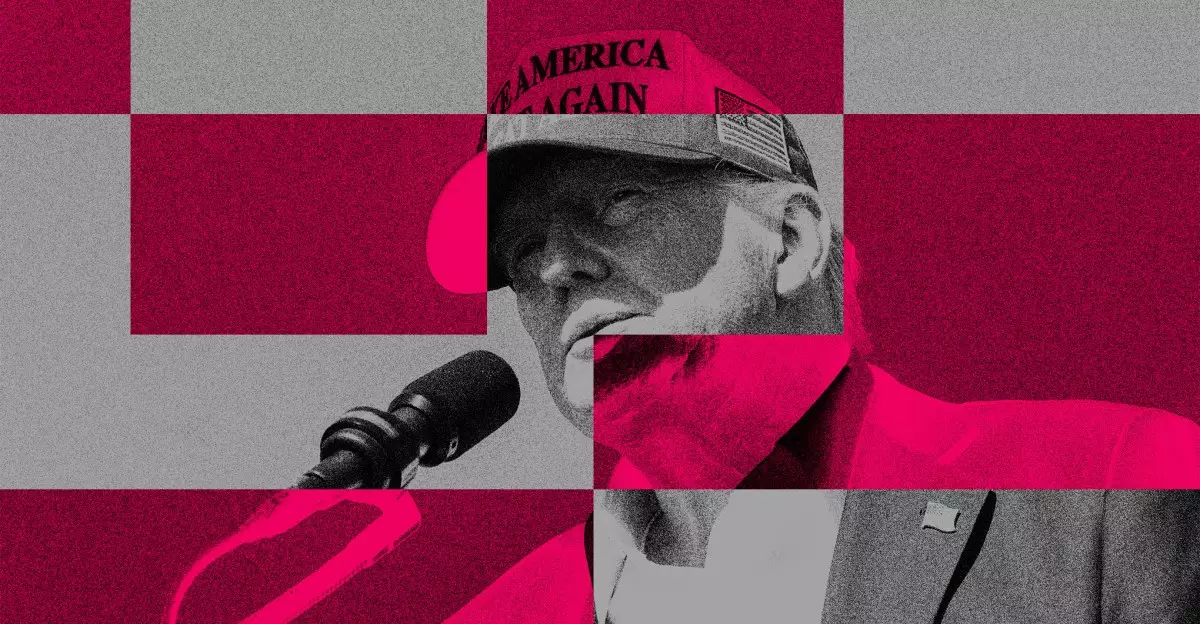At the heart of recent political maneuvers lies a troubling paradox: a government entity, purportedly wielding authority over digital platforms, actively participates in a space it seeks to regulate or eliminate. The Trump administration’s decision to create a TikTok account—despite the ongoing legal and diplomatic chaos surrounding the platform—exposes a profound disconnect between rhetorical dominance and strategic control. This act is not merely about messaging; it is emblematic of the broader struggle between authority and influence in an era where social media commands societal narratives. By establishing the @WhiteHouse TikTok account, the administration seems to acknowledge TikTok’s undeniable cultural significance, yet this move also reveals an internal dilemma: the desire to appear modern and engaged, while grappling with the reality of its looming ban. This dichotomy underscores a fundamental truth—governments often wield power in ways that are more performative than authoritative, especially within the fluid and unpredictable landscape of social media.
Politics & Power: A Game of Cat and Mouse
For years, TikTok has evolved into a battleground for ideological and strategic dominance. The Trump administration’s initial attempts to ban the platform in 2020 marked a bold declaration of technological nationalism, fueling fears of Chinese espionage and data security threats. However, the political calculus shifted when Trump’s re-election campaign discovered TikTok’s unparalleled capacity to mobilize younger voters and generate viral content. Using TikTok not only as a communication tool but as a political weapon, Trump successfully harnessed its viral nature to amplify his message—despite the legal discourse surrounding the platform. The creation of official accounts like @TeamTrump signals a strategic pivot: a recognition that controlling the narrative is nearly impossible without active participation. Ironically, by engaging TikTok directly, the Trump administration seems to be consolidating its power within a space it claims to threaten. It’s a classic case of influence disguised as opposition, blurring the lines between adversary and ally—an indication that for some, control is less about regulation and more about presence.
The Illusive Promise of a Deal
In a political landscape riddled with delays and broken promises, the much-anticipated deal between the U.S. government and ByteDance remains elusive. The September 17 deadline looms large, yet despite the political lip service and public theatrics, tangible progress appears minimal. Past efforts have been marred by diplomatic tensions, tariff disputes, and national security concerns, all of which have obstructed a clear resolution. Meanwhile, the Trump administration’s actions—like launching an official TikTok account—serve as a testament to its understanding that influence transcends legal agreements. The platform’s real power resides in its ability to shape perceptions and sway public sentiment. As the technical and diplomatic standoffs drag on, it becomes increasingly clear that the so-called ‘deal’ may be less about cybersecurity and more about political optics. The lack of resolution underscores a broader reality: in the digital era, actions often speak louder than policies, and governments are increasingly aware that engagement—even symbolic—can wield a different kind of influence.
TikTok’s Political Significance: Beyond Entertainment
Far from a mere entertainment app, TikTok has cemented itself as a crucible of modern political culture. The Trump campaign’s aggressive push on the platform exemplifies how digital platforms have become vital battlegrounds for influence and perception. The high engagement figures—reportedly billions of views—highlight TikTok’s potential to shape political discourse in unprecedented ways. Rather than viewing TikTok as an adversary, the administration now seems to recognize its utility as a propaganda tool. The platform’s viral nature allows political figures to bypass traditional media and reach audiences directly, often with fewer filters. This strategic shift reflects a broader trend in politics: embracing digital influence as an indispensable component of modern campaigns. Yet, this also opens the door to manipulation, echo chambers, and misinformation—dangerous byproducts of an era where virality often trumps veracity. The Trump administration’s balancing act reveals a nuanced understanding that influence on TikTok can be both an asset and a liability, depending on how it is wielded.
Power in Paradox: Playing Both Sides of the Digital Fence
Ultimately, the Trump administration’s behavior encapsulates the peculiar dynamics of power in the 21st century. It demonstrates an unsettling truth: control over technology is often fleeting, and influence is, paradoxically, most potent when wielded through participation rather than suppression. The decision to maintain a TikTok presence—despite the legal threats and political rhetoric—illustrates a strategic acceptance that influence in the digital realm is now inevitable. This approach embodies a broader shift where governments are forced to adapt to new paradigms, accepting that viral platforms are not easily tethered by legislation alone. Instead, they become part of the dialogue, shaping narratives in ways traditional influence could never achieve. The lesson here is clear: in the modern political arena, power is less about dominance and more about strategic engagement—an insight that will define the future of political communication within the digital landscape.

